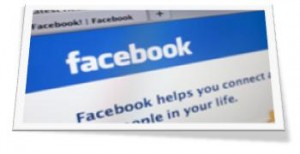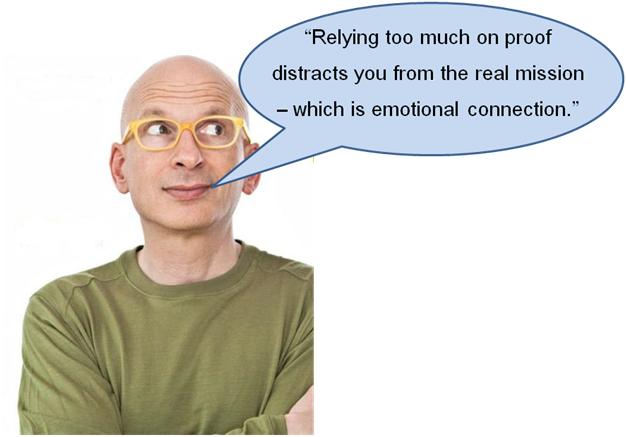During the past 12 months, I’ve joined Lori Lewis on a new kind of world tour, visiting radio stations, clusters, and companies – helping them unravel their digital mysteries. We’ve had some frank conversations about social strategies, and we’ve led numerous brainstorm and staff sessions in an effort to bring clarity to station efforts.
 We came up with the phrase “Random acts of digital” (or “social”) to describe what often occurs at the station level. There are so many distractions, time and people pressures, and bright shiny objects that it’s often difficult to know in which direction to go.
We came up with the phrase “Random acts of digital” (or “social”) to describe what often occurs at the station level. There are so many distractions, time and people pressures, and bright shiny objects that it’s often difficult to know in which direction to go.
It also has become clear that broadcasters often don’t have a set of goals in the social space. I’m not talking about the number of “friends” or “followers” they’ve amassed. The real question revolves around what brands are hoping to accomplish in the social space.
Some want to simply aggregate more fans (like building the database or cume), some want to monetize social media, some want to use it to promote what’s on the air, and thankfully, some want to use it to build relationships and fan engagement.
To this last point, a question often comes up about metrics. We have so many numbers in our lives that allegedly measure performance. Ratings, revenue, and their rankings versus the competition that we often get hung up on needing numerical evidence that “it’s working.”
Many broadcasters forget what they’ve learned as people in the social space (at least those of them who have personally ventured out into the Facebook, LinkedIn, or Twitter universe), and instead try to support success with numbers.
It wasn’t long ago that Seth Godin put it so well, and I wanted to repeat his prescient comment because it rings so true:
I realize that it is difficult for bottom line-oriented achievers to simply take the leap of faith that leads you to believe that somehow your efforts in social are working. But if you think about the relationships that you’ve had – or have – in your life, they weren’t quantified. They probably just happened over time.
It’s the same with your relationships with products and brands. You probably didn’t just fall head over heels in love with Apple the first time you bought one of their products. Or even that Audi. Or that new restaurant that opened up downtown.
But over time with multiplied experiences, certain brands draw on the ability to build and maintain relationships with you. Sure, there are measures like “Net Promoter” which we have extensively used in our station survey work. But even a recommendation score is no guarantee that consumers are actually evangelizing for your brand.
It is often difficult for managers to let go of the control they have enjoyed throughout their careers, and trust in relationship-building with their audiences and advertisers. You may not be able to put numbers to your engagement, but I would suggest that having strong, vital relationships is something that you can’t quantify anyway.
It’s not the number of friends you have. It’s the quality of the relationships you build, share, and enjoy.
In real life and on Facebook.
For information about how Lori Lewis can help your station, company, or brand manage its social media “footprint,” contact [email protected]
- Media And Technology In 2025: Believe It Or Not! - April 18, 2025
- In Radio, You Just Never Know - April 17, 2025
- The Secret To Making A Great Podcast (And Great Radio) - April 16, 2025





Good stuff. For additional “thinking” on this, check out this piece – The Problem With Engagement – https://www.socialmediaexplorer.com/social-media-marketing/the-problem-with-engagement/
Love it, Bruce. Always nice to read more reinforcement for engagement and relationships. Thanks for chiming in.
Tom has spoken at two of our Summits and always has a great approach and on-point thoughts. And this video reinforces that. Thanks for sharing it, Mike.
You are sooo right about this. Very few individual decisions provide measurable results, but in the aggregate they always do.
Adding a great song or dropping a bad one won’t show in the ratings – any more than one good or bad morning show bit will. But airing a lot of good or bad content almost always moves the needle. Its the same with social media touches. One new connected listener won’t bring anything a station can measure, but a whole lot of them will.
The voicetracking era has limited those handshaking opportunities – it seems to me that stations should be holding on to social media connections for dear life.
Social media connections can often have similar impact to meeting listeners face to face. Personal Facebook connections can be better than shaking the morning teams hands in that the conversation can continue. The voicetracking er
Every opportunity to interact directly with listeners is a benefit. And these days, acknolwedgment in the form of a follow or a “like” from a DJ is like a digitla autograph. Thanks for adding to the conversation.
Great post Fred –
Your friend Tom Asacker has a video today that compliments your points. He tries to explain “why people believe what they believe” and asks the question “if you understand then why don’t you change”?
https://www.youtube.com/watch?v=5s4NvHD_oHE&feature=youtu.be
It’s all about a different mindset. Although many didn’t notice, examples have been in plain view for years, through public radio stations as well as many commercial AAA-formatted stations. As a PD, I admired the connection with the audience these stations developed. And it was hard to explain to management who thought it was ll “broadcasting”.
It IS a different way of thinking about it, Dan. We are starting “Brand Adovcates” programs at a number of our client stations, and I can tell you that it is a very rewarding – but very different – process and mindset. Establishing real relationships with listeners is a very new concept for a “mass” medium. Thanks for taking the time, Dan.